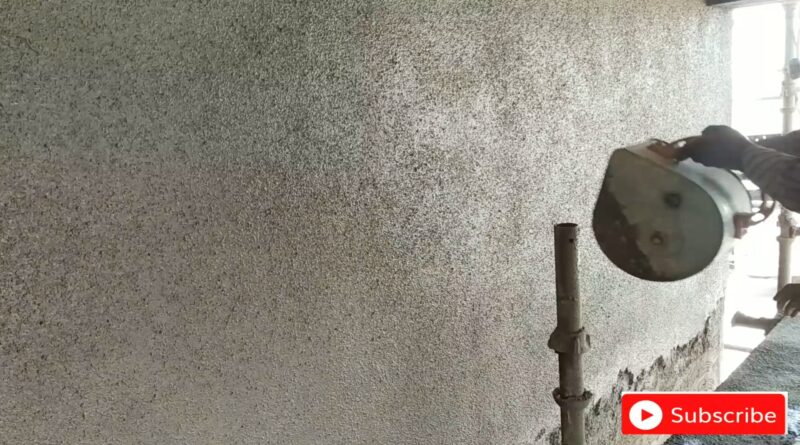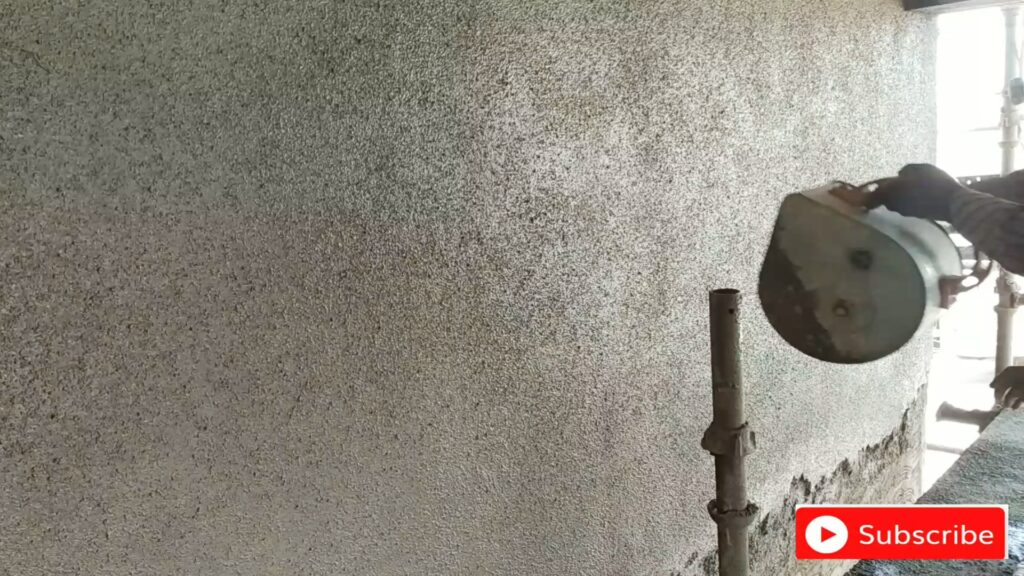Type of Plaster Finish & its specifications
Plastering :- Applying mortar coats on the surfaces of walls, columns, ceiling to make smooth finish. Mortar used for plastering may be lime mortar, cement mortar or lime-cement mortar. Commonly mix is used for plastering is 1 : 4 or 1 : 6
So In this article i am going to tell type of plaster finishes mainly famous in plastering work are as follow :
- Sand faced Plaster
- Plain Cement Plaster
- Neeru Finish
- Neat Cement Punning
- Premix Plaster
- Rough Cast Plaster
- Exposed Aggregate Finish Plaster
- Acrylic Plaster
- Waterproof Plaster
- Stucco plaster
Sand faced Plaster
The finishing coat shall be applied after the undercoat has sufficiently set but not dried and in any case within 48 hours. Sand to be used for second coat shall be sieved. Sand passing through 3 mm sieve shall be taken for the second coat. The second coat shall be struck uniformly over the first coat and firmly pressed and leveled using a batten. The surface shall then be firmly troweled and sponge floated to remove excess moisture and bring the sand to the surface
Plain Cement Plaster
The material and procedure shall be same as for sand faced plaster, except
instead of sponge finish, the surface is finished plain with trowel or wooden float in case of plain cement plaster.The surface thus prepared shall be uniformly roughened for texture, by running a fine wire brush lightly over the surface if necessary.
Neeru Finish
Rendering or application of Lime paste/ Putty to fill cracks and uneven surfaces to obtain a smooth and level finish is called neeru finish. Neeru coat shall be of 3 mm thickness. For Neeru finish, the undercoat plaster shall, unless otherwise mentioned, be of 1:4 proportions. Lime shall be slaked at site and allowed to remain in a tank of water for two days before using it as neeru. Neeru shall be applied immediately after the undercoat has obtained the initial set (about 4 hours).
It shall be well trowelled into the first coat. Trowel marks shall be removed and the surface made plain, even and level. The surface then shall be cured for 10 days. The curing shall commence after an initial period during which the surface is allowed to shed its excess moisture. Ceiling plaster shall be done before wall plaster and wall plaster shall commence at the top and worked downwards.
Neat Cement Punning
Before application of punning the surface shall be made true. All the put log holes,crevices etc. shall be filled in properly. Then the entire area shall be uniformly treated with a neat paste of cement and rubbed smooth, so that the entire surface is covered with neat cement coating. The quantity of cement applied shall be 1 kg per square meter. Smooth finishing shall be completed with trowel immediately and in no case later than half an hour after adding water to the plaster mix.
Premix Plaster
Premix plasters are available in dry mixture form in bags. Water is to be added to the mix as recommended by the manufacturer and the mixed till a consistent paste is formed. Such plasters may be applied in single coat also. Such plasters are hand applied or machine applied
Rough Cast Plaster
Mortar for the finishing coat shall consist of one part of cement plus one part of well graded sand plus one part of gravel of 3 mm to 6 mm size. Mortar shall be thrown on the wall by means of a scooper or plasterer’s trowel. The thickness of the coat shall be about 10-12 mm
Exposed Aggregate Finish Plaster
White and coloured marble chips shall be of 6 mm to 12 mm size of Makrana /Ambaji, grade 1 or Dongri Chittor Brown /Rajnagar /Abu green grade – 1 quality as specified. Marble dust shall be obtained from crushing hard marble stone.
Exposed aggregate finish plaster shall, unless otherwise mentioned, be 20 mm thick. Procedure of application shall be same as for sand faced finish.
Mix ration shall be 1 cement: 1 marble chips / pebbles by volume. Marble dust @15% by volume shall be added to the admixture. The pebbles to be used shall be well washed and drained. The admixture shall be thrown wet on to the undercoat while it is still plastic using strong whipping motion at right angles to the face of the wall. One coat of neat cement slurry @ 2.75 kg cement per square metre of area may be applied on to the undercoat to receive the top layer. The white plastering shall be laid in panels of maximum 1.2 M x 1.2 M or as per drawing with 12 mm x 20 mm grooves in between formed by holding removable wooden batons of 12 mm x 25 mm size over the under layer.
Loose mortar etc. on the top surface shall be cleaned / removed by brushing /washing / spraying with water jet after initial setting of mortar
Acrylic Plaster
This is a ready to use compound of inert filler materials for application on building interiors. Acrylic plasters are in lieu of neeru or POP, rendering the wall ready for painting without use of putty. Surface should be in level and absolutely dry before application. Surface preparation and application to be as per manufacturer’s specifications.
Waterproof Plaster
Integral cement waterproofing compounds of approved make and manufacture shall be used for plastering. These compounds shall generally conform to IS:2645. Use of admixtures containing calcium chloride shall not be permitted. Material shall be brought to the site in its original packing.
The compound shall be well mixed with dry cement in the proportion of 3% by weight or as recommended by manufacturer. Care shall be taken while mixing, to see that waterproofing material gets well and integrally mixed with cement and does not run out separately on addition of water


